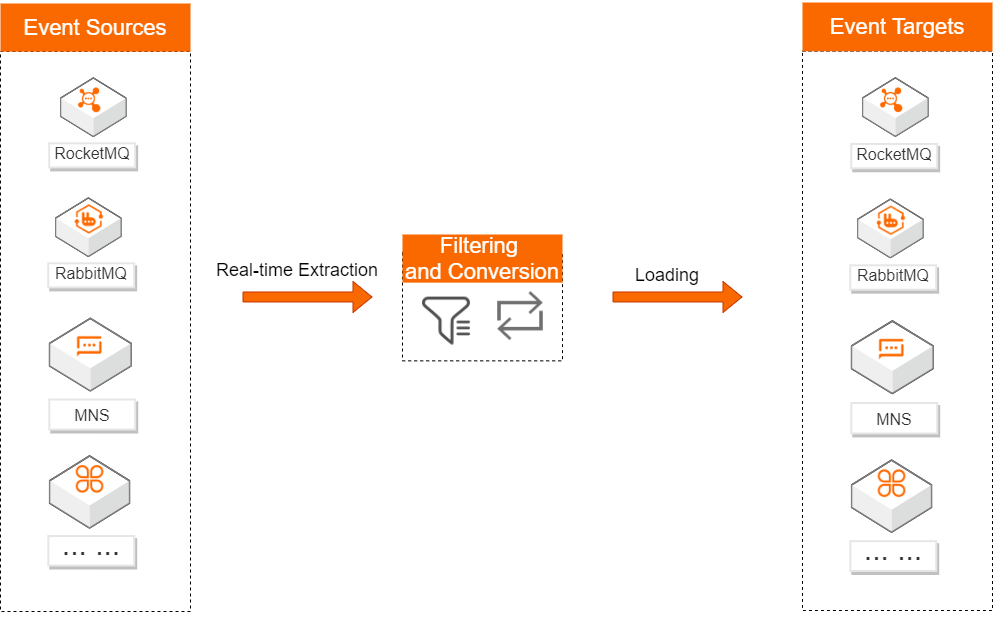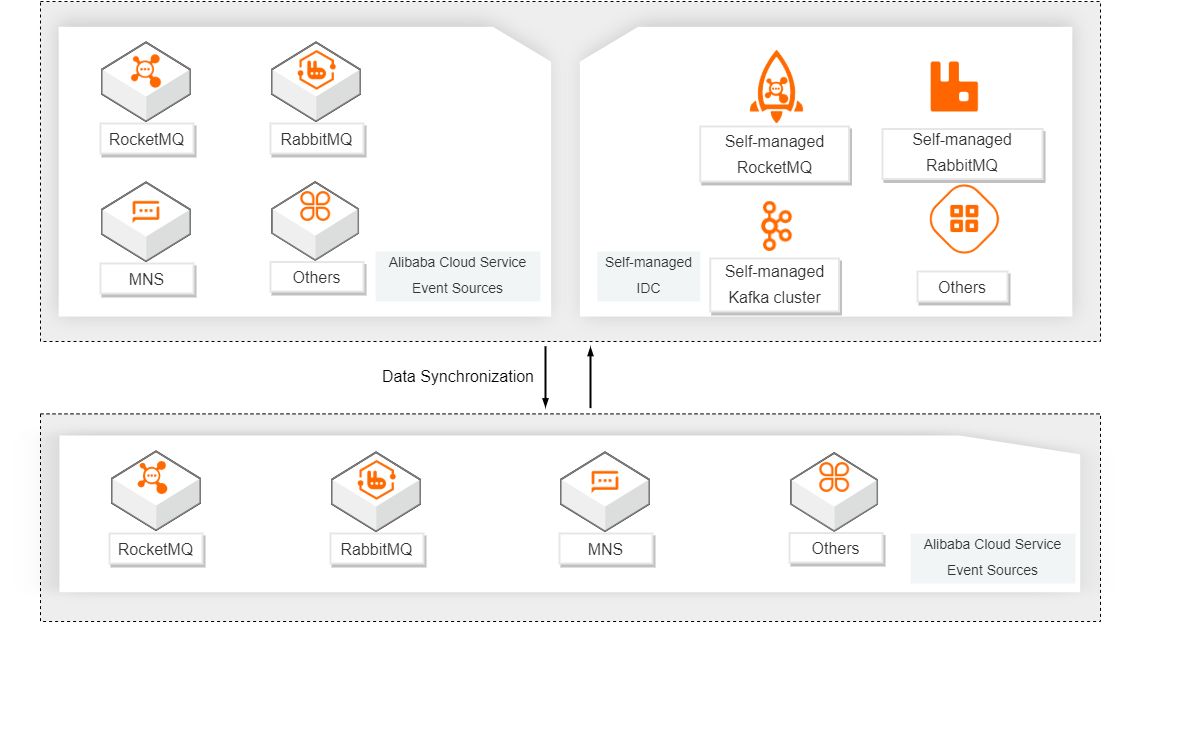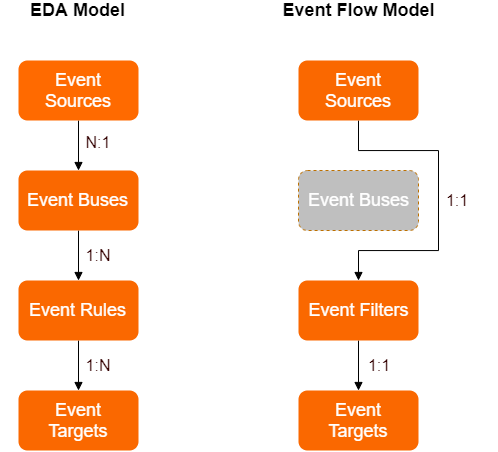In the era of information explosion, more and more data sources are continuously and rapidly producing data. Such data is called streaming data and requires to be analyzed and processed. Event streams allow you to process end-to-end streaming data with ease. You can use event streams to extract events from event sources, transform and analyze the events, and then load the events to event targets. The process is known as extract-transform-load (ETL). This topic describes the scenarios, limits, and benefits of event streams. This topic also compares the event stream architecture with the event-driven architecture.
Scenarios
ETL
Event streams are lightweight channels for processing end-to-end streaming data in real time. Event streams allow you to filter and transform lightweight streaming data, synchronize data, and connect services to systems. For example, you can use event streams to synchronize data between data warehouses, data processing programs, and data analysis and processing systems.
The following figure shows how events are forwarded from event sources to event targets over event streams without event buses.

Message routing or synchronization
Event streams can be used to implement various features such as on-cloud message routing, data backup, active geo-redundancy, cross-account data synchronization, and data synchronization across data centers deployed in hybrid cloud environments. These features help create an all-in-one solution for message processing.

Limits
By default, up to 50 event streams can be created in a region.
If you require more than 50 event streams, apply for a quota increase in Quota Center. The number of event streams that you can apply for ranges from 51 to 10,000. For more information, see Submit an application to increase a quota.
Benefits
Real-time and efficient
Event streams allow you to extract events from event sources and load the events to event targets in real time. Event streams do not allow events to be accumulated. This accelerates the speed of accessing events and improves the efficiency of response to business and operational events.
Lightweight integration
EventBridge provides a simple stream model and API operations for you to use event streams. You can quickly manage multiple underlying resources of event-driven data streams by using the EventBridge console or by calling API operations. This prevents complex operations and facilitates quick integration.
Metric monitoring
EventBridge provides multiple metrics for you to monitor data in event streams. You can set threshold alerts for data streams. This way, you can respond to exceptions at the earliest opportunity to ensure that data streams run as expected.
Cost-effective
No minimum charge is required. You are charged for the amount of data transmitted to event streams. You can view the data amount on the dashboard in the EventBridge console. You can configure the data transformation and metric monitoring features based on your business requirements. You are not charged if you do not use the features. Compared with the event-driven architecture, event streams provide you with more cost-effective event processing solutions.
Architecture comparison
The following figure compares the event stream architecture and the event-driven architecture. The event stream architecture adopts the 1:1 structure instead of N:N structure. The event stream architecture does not require you to create event buses. Therefore, compared with the event-driven architecture, the event stream architecture is more lightweight and provides higher dumping efficiency.
